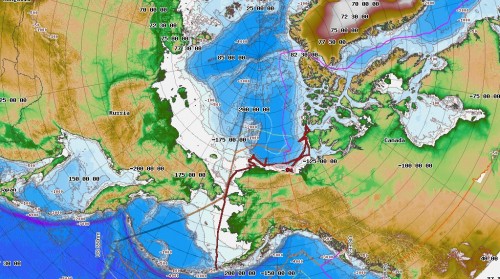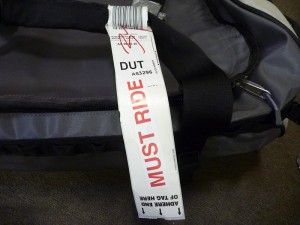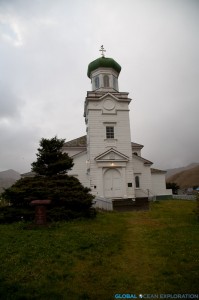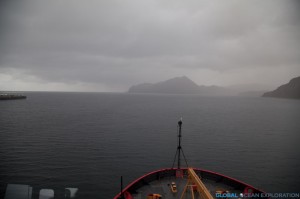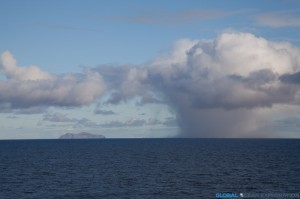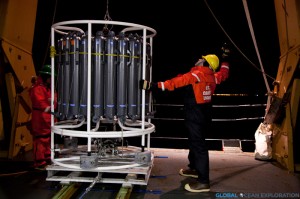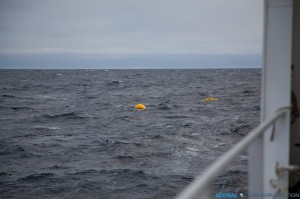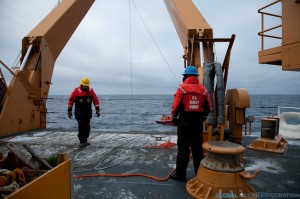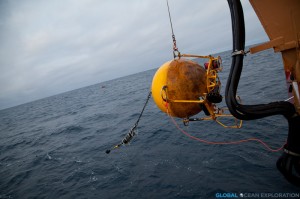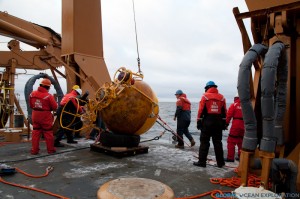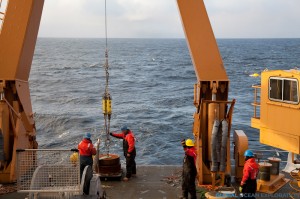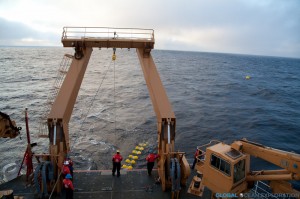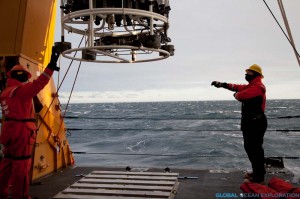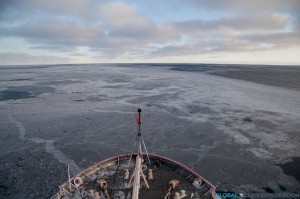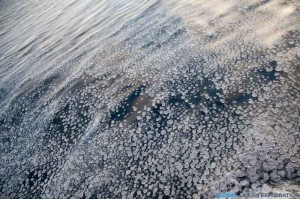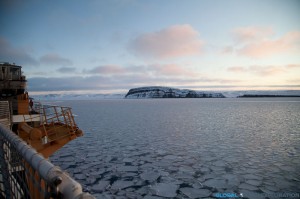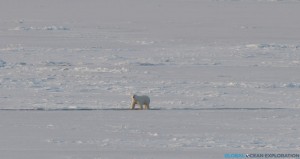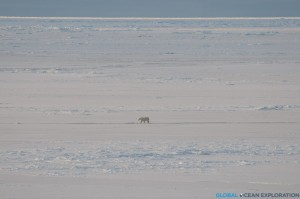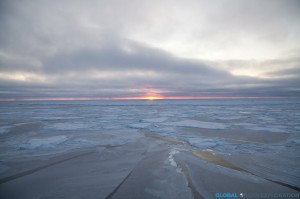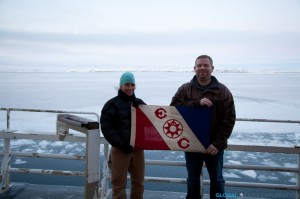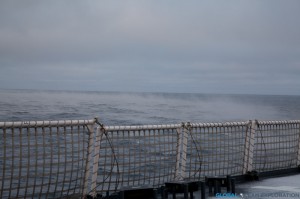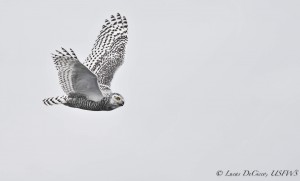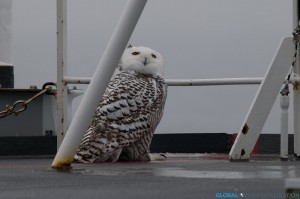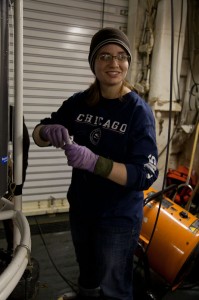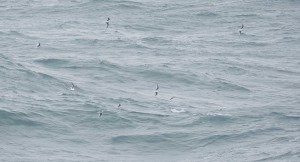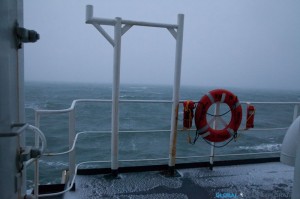We are supposed to get to Dutch Harbor tomorrow after a four-day steam through variable sea conditions, mostly very rough. The Bering Sea is in her full glory with high winds and big seas, truly magnificent to see. The USCGC Healy is a great ship and handles the seas very well. I thought that this would be a good time to talk about this fantastic vessel and little things that make up the complete Healy experience. While the science I have spoken about is at the forefront of the expedition, there is a lot going on behind the scenes on our floating home. Here are a few highlights:

Because this is a big ship, there are a lot of doorways and hatches that must be closed and dogged every time you go through. To walk from the lab to the galley via the inside passageway, there are five doors and they are my nemesis. There is no need to work out while aboard the Healy because between opening and closing the doors and going up and down the steep stairways, or ladders, I get quite a workout! It takes most of my weight to latch the heavy steel doors! And to get to the bridge (05 Deck) from the lab deck (the 01 Deck), you have to walk up five flights of steep stairs (ladders) and through many doors. These doorways of course make the ship safer as all the individual spaces are sealed from leaks, etc, but it is quite the workout to get from one space to the next!

The galley is a vital part of keeping the crew and scientist happy and well fed on the cruise. The cooks do a great job of providing a variety of foods and always a vegetarian option! Plus there are always lots of treats of cookies and cakes to fulfill everyone’s sweet tooth.

A few things help to keep me super happy while on board the Healy, one is certainly the coffee shop! The Healy is the only vessel that I have been on that has a full coffee bar where you can get freshly brewed lattes or any coffee drink of your choice. For a few moments, every day, you can get transported and have a latte served to you with a smile while sitting and watching surf movies care of Chris.
Morale nights play a big role aboard the Healy. There are soccer tournaments, basketball games in the helicopter hangar, movie nights, and trivia to name some of the organized activities. Along with a few other scientists, I have been playing trivia once a week and it has certainly helped pass some time! And the crew has been awesome welcoming us to participate in their activities.
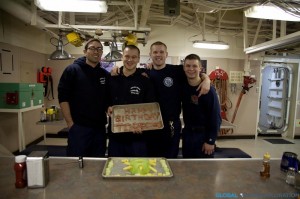 Celebrating a birthday aboard the Healy…Jesse Torres turns 21 and is greeted by some of his favorite treats, spam and fresh fruit, courtesy of Zach Young, Tyyler McNease and Evan Bergeson.
Celebrating a birthday aboard the Healy…Jesse Torres turns 21 and is greeted by some of his favorite treats, spam and fresh fruit, courtesy of Zach Young, Tyyler McNease and Evan Bergeson.
 The Beautiful Bering Sea
The Beautiful Bering Sea
We are in our final transit day to Dutch Harbor and we are witnessing the Bering Sea in all her glory with rough seas and strong winds. It is magnificent to see the Bering Sea like this with waves going every which direction and a fierce wind blowing. We are getting into Dutch tomorrow afternoon and enjoying every minute of this display of power. Although being rocked about is a little tiring.
 A wave behind the stern of the ship…we have a following sea…a VERY big one at that!
A wave behind the stern of the ship…we have a following sea…a VERY big one at that!

After a four-day steam through big stormy seas, we are finally approaching Dutch Harbor and should arrive the afternoon of the 27th. I am using this time to finish up some work and pack up all of my equipment. All of the scientists are also packing and the lab is beginning to look barren as we are all getting ready to head home.
It is nice to be back in the Bering Sea with abundant birds flying by the ship. In the Arctic Ocean, I was amazed by the dearth of bird life which only highlighted how extreme and harsh the conditions are so far north, but once we passed through the Bering Strait, the bird life became much more abundant.

On October 27, the snow-dusted peaks of Dutch Harbor appeared in the distance and I knew that the expedition was coming to a close. Cruising through the Southern Bering Sea, there were many birds including fulmars, albatross and a variety of gulls soaring indicating that we were back in the prolific waters of the Bering Sea. The abundance of fishing vessels on the radar indicated that we were in the midst of crab fishing season and that we were nearing “civilization.” Until the 26th when we entered the crab fishing grounds, there were no other vessels in any proximity to the Healy for weeks. As we pulled into Dutch Harbor, I was struck by the beauty of the Aleutians with mountains rising out of the water protecting this vital Alaskan port. It is a truly beautiful place with eagles soaring and otters frolicking. The sun came out illuminating the mountains. After passing Priest Rock, we turned and could see the low buildings of Dutch Harbor and Unalaska. Upon completing a successful mission, we returned to port and felt dry land for the first time in four weeks.



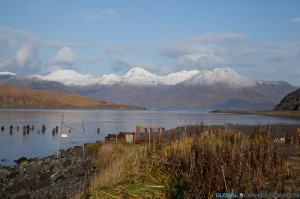
The view from the airport parking lot before flying home…Goodbye Dutch Harbor…
.
For more information and to view photos, go to: www.globaloceanexploration.com
